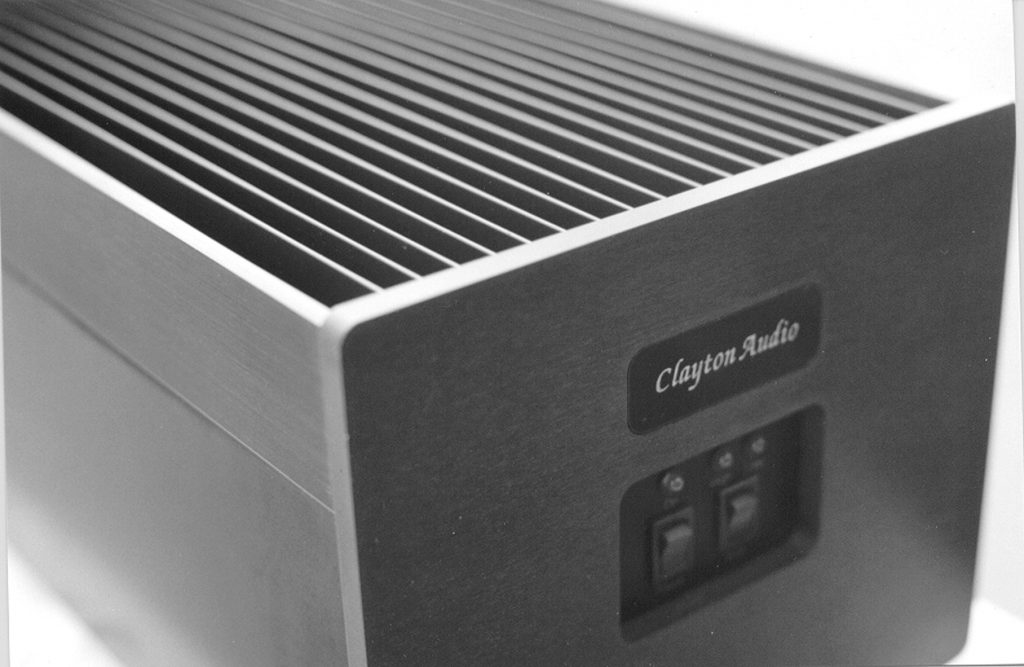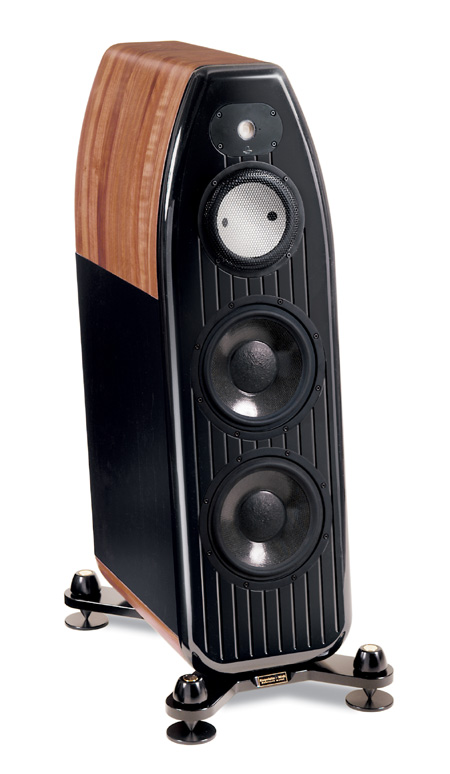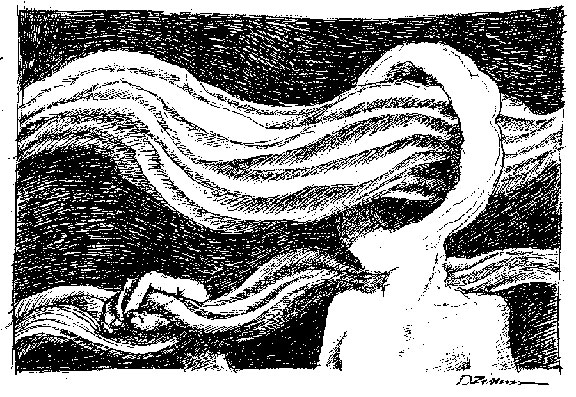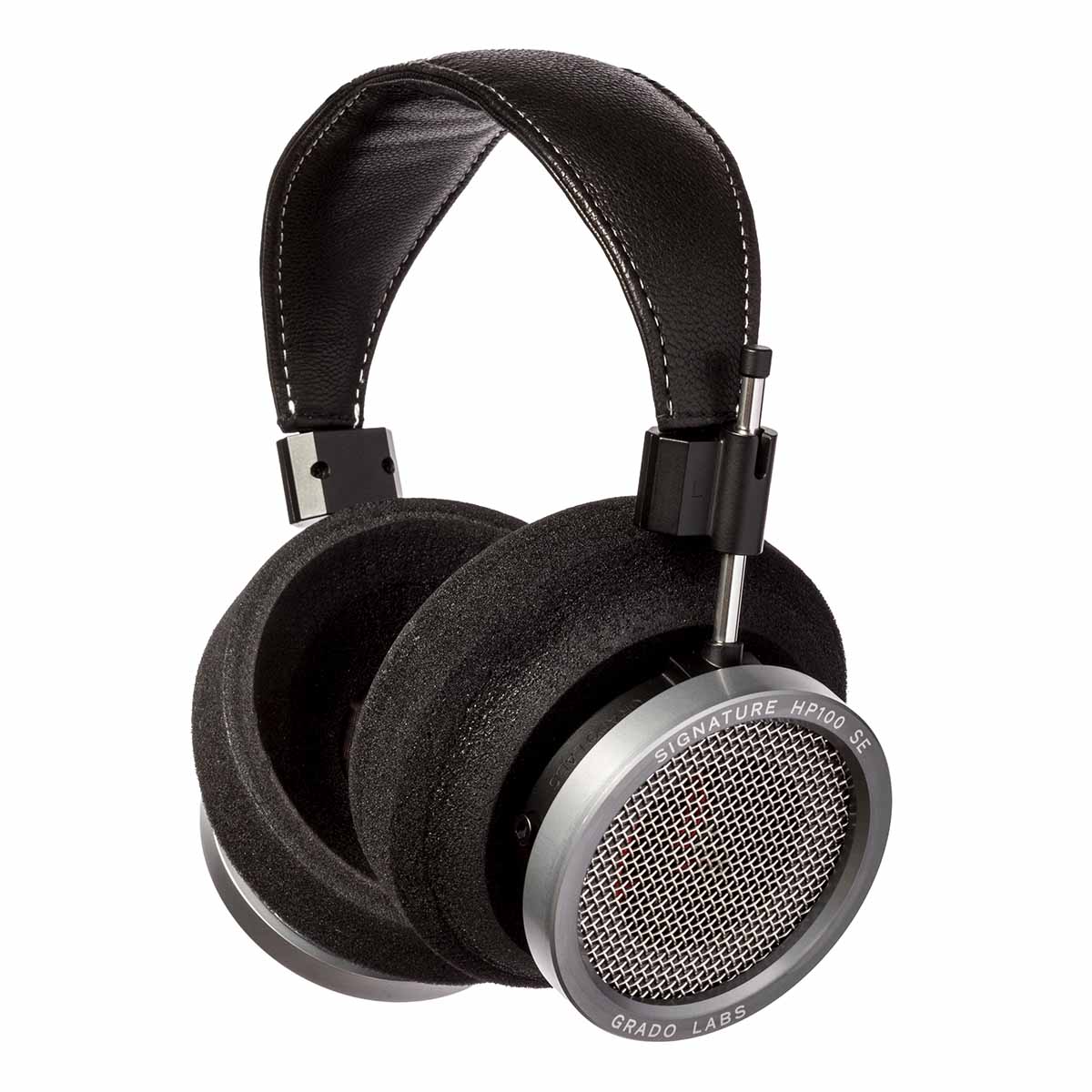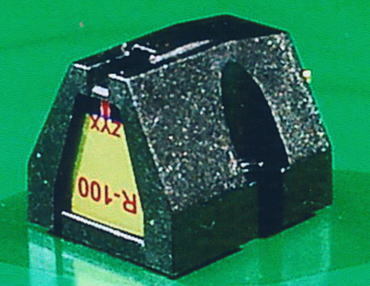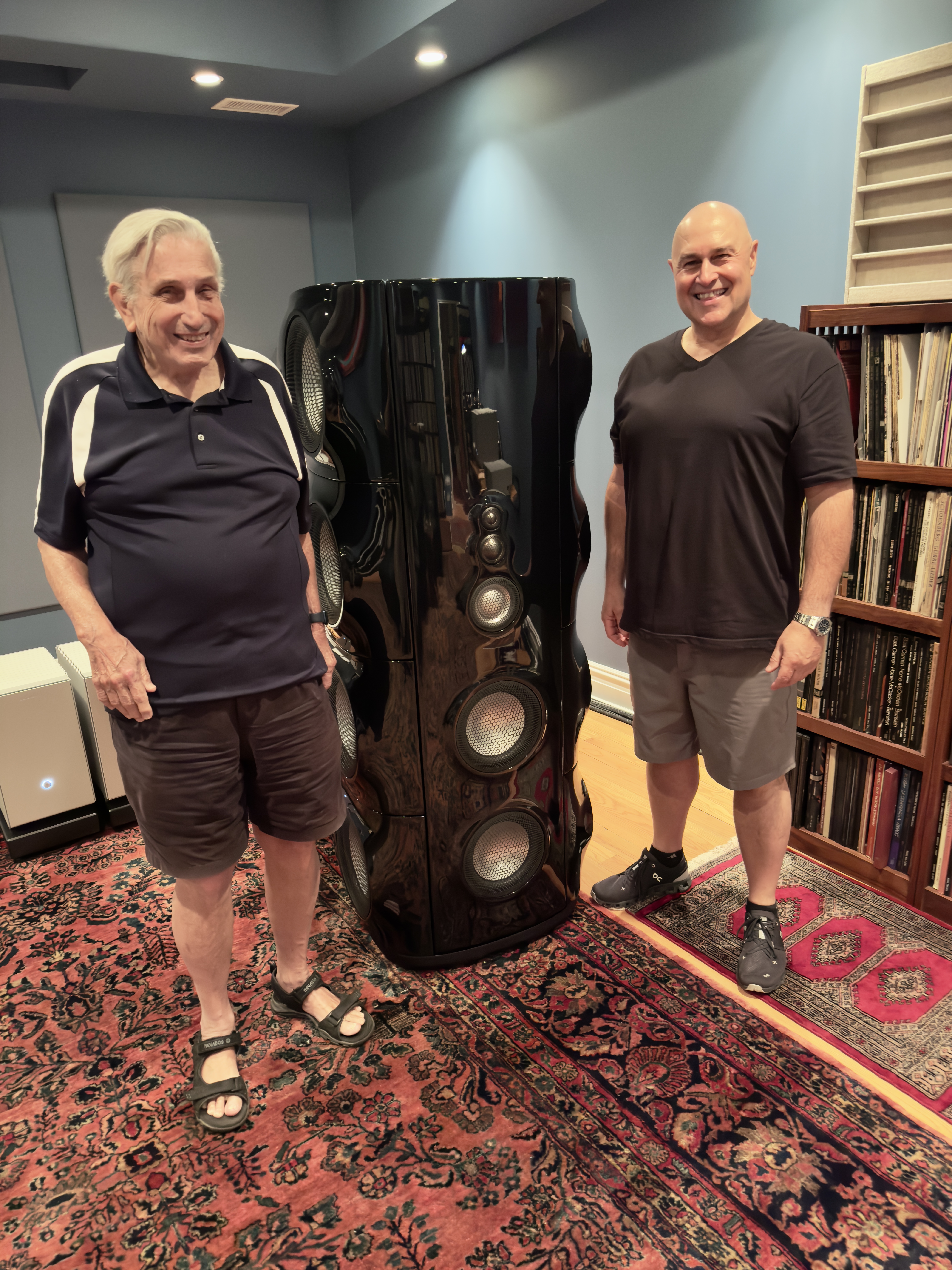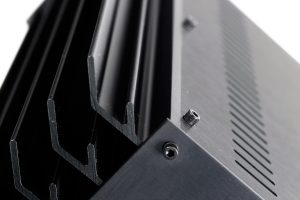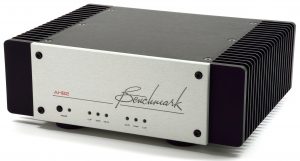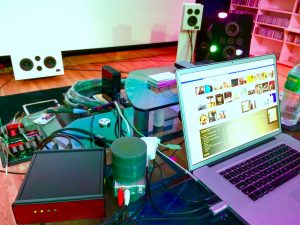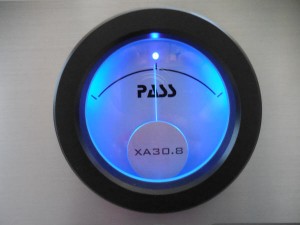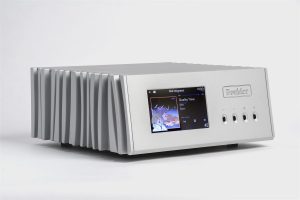This article, by Francisco Duran, Dave Clark, Larry Cox, and Victor Chavira, originally ran when audioMUSINGS was in print - Issue 9, 1999.
Back in Issue 6, I had Clayton's S40 stereo amp in my system for review, when I had a somewhat different setup than I do now. I was using a Classe CP-60 preamp matched to a Classe CA-200 amplifier, a combo that had a smooth, wide open sound and plenty of horsepower. At the time I thought that a more interesting comparison with my CA-200 would be Clayton's bigger M70 monoblocks, but it was not to be. I sold the Classe combo last year, and replaced it with my trusty Reference Line passive line stage and the Monarchy SM70 25wpc stereo amp that I'm happier than heck with. So wouldn't you know, what comes along this year for evaluation but the Clayton M70s! Timing is everything.
Last year I wanted more power and slam and this year I got it. The M70s put out 70 wpc of pure class "A" power into 8 ohms and 140 wpc into a 4 ohm load. Each amp's power supply contains a 700 VA toroidal transformer with 100,000 microfarads of capacitance. The output stage is an extremely high current design to enhance stability and minimize noise. These facts were proven when the M70s drove the 85dB-sensitive Impact Vento loudspeakers to high levels with ease—unfortunately not at my house, but at Art Shapiro's. (See review in this issue.) One feature I liked was the option of running the M70s in balanced mode. So how did all of this power and technology sound in my system? I guess I could start by saying that they sounded just like the S40 only more powerful, but I won't. Well, actually they did.
I started off with the disc A Twist of Jobim. On track 8, "Children's Games," Alan Pasqua's piano sounded great. It was relaxed and natural, with an effortless flow. Ernie Watts plays tenor sax on this cut and the next one, "Lamento." While the sound of his sax wasn't as liquid as it would be running through tubes, it did lean in that direction. Vocals, too, were full and round, with natural textures. Nothing I have played Whitesnake through can save the midrange on those CDs. I liked the sound of the Whitesnake discs through my Monarchy amp better—although the sound was slightly lighter, the Monarchy smoothed out the edginess of the guitar and vocals. Going back to the Claytons on my old standby, Brasileiro, the vocals had a fuller, rounder quality to them than with my amp. Sibilance was toned down slightly, but not so much as to dull the top end. On to some "real" metal music, if you will. Metallica's vocals sounded warmer. The ring and shimmer to cymbals and sharp transients like lead guitar notes seemed to have a slight edge shaved off. Actually, Metallica's And Justice For All CD is pretty well recorded, a lot better than any Whitesnake or Led Zeppelin discs. Ah, rock and roll. (By the way, did any of you check out Metallica playing with the San Francisco Symphony on VH-1? COOL!)
The M70s didn't curtail detail at all in the midrange, nor did they sound too dark. The highs have a degree of roundness that at first might make you think they are rolled off, but top end details come gliding through. In fact, I heard small details in the music that I haven't paid much attention to before. The highs were round, clear, and smooth, though this depended on the recording. The irritant factor is way down and the musical factor way up. Cymbals sound like real cymbals, not splashy smacks of metal. Though detail was very good, the top end doesn't seem to extend to neverland, and there were times that I wished for a little more sharpness. My speaker cable could be a factor—I feel that wire from Nordost or Silver Sonic would be a better match for the M70s than my Acrotec. Bass was dynamic, powerful, and full. Low-end weight was added to my speakers. On the Jobim disc, bass guitars anchored the music down, and the pace moved along fine, thanks to players like John Pattitucci, Melvin Davis, Jimmy Haslip, and Christian McBride. It was fun trying to see if I could pick out each player's musical style. If the Claytons had the tightest, fastest bass in the history of amplification, I think it would be out of sync with the rest of their tonal balance. Let's just say that their bass is full and powerful, with very good pace and drive, but without being over-articulate or lean.
The effortless sound of these amps relaxes you into your listening seat. I quickly got involved with the music. The M70s revealed inner details of percussion with ease. I played another oldie but goodie, Pink Floyd's Dark Side of the Moon, for old time's sake, and it sounded effortless, full, and smooth. The music emerged without a hint of strain. I almost felt I could become a part of the huge soundstage in front of me. This aspect of the sound of the Claytons reminded me of the Musical Design DM-100B amp, which is a soundstaging champ if ever there was one. When I switched to the Fi Sampler CD, the jazz tunes were all over the place stage-wise. One standout to me was the Sonny Rollins track, "Old Cowhand." Rollins' sax sounded appropriately rich and sharp, with spacious and believable images as lifelike as my speakers could give me. As with the smaller Clayton amp, the tone and timbre of the music seemed to be right on. No matter how high the gain, I did not experience distortion or compression. (Of course, I know the limits of my speakers. There is a point at which I have to back off on the volume.) These amps seem to have all the power one needs for a wide variety of speakers.
I enjoyed myself a lot more this time around with the Claytons in my system. It must have been the power. The only fly in the ointment came as I sat and stared at the Clayton monos next to my little Monarchy sitting and thought about the price difference. The Claytons retail for around $6000 a pair whereas the Monarchy costs $719. The fact that I could switch back and forth between amps and not go into musical shock says a lot for the Monarchy. The Monarchy has a lighter overall sound with lightning-fast transients and very good bass slam. The Clayton has a darker, warmer, fuller sound, with power to spare and a musical quality that is hard to get away from. I must say that while the build quality of the Monarchy is very good, the Claytons look and feel like pieces of jewelry. Their parts quality is also top notch, and commensurate with their price. Okay, call me a cheapskate, but I'm sensitive about money. I am not the wild spender I once was. I could live quite happily with the Clayton monos if I could afford them, but even though I can't, I was glad they came my way. Francisco Duran
(1) Balanced, (2) disappearing, (3) music, not "stereo," (4) reasonable bass, (5) expensive. These five attributes describe my impression of the Clayton M70s. The Claytons deliver a complete sound. With thirty more class "A" watts per channel than their little brother, the Clayton S40 stereo amp, my inefficient ATCs gained more bass. The top end was sufficiently extended that I never felt I was missing anything. The midrange exhibited no obvious honkiness or other exaggeration. I think this is the kind of performance many audiophiles search for in their homes.
The Clayton M70s matched so well with the rest of my system that my speakers disappeared. Recordings were so well reproduced that it seemed as though the recording venue was recreated in my room. My speakers and preamp aren't the most precise imagers, so at no time was I able to identify an exact location of performers or instruments. So what, say I.
I was, however, able to identify the different aspects of the sound of a saxophone on Something Blue, including not only the reediness but also the longer, larger resonance of the bowl of the saxophone. I liked that.
Throughout my listening experience I was reminded of why I became an audiophile. It's about music. My Classe CA100 was woefully inadequate in comparison. Everything seemed more pinched and strident, especially in the midrange. The Claytons, while sounding more powerful, also gave a more relaxed presentation. The Claytons struck me as more "tubey" sounding than the Classe, though the Classe has a reputation for being tubey. I do not mean that the Claytons are soft in the bottom end and rolled off on top. They aren't. Nothing sounded fuzzy or indistinct; there wasn't that extra layer of haze that makes things seem warmer while lowering resolution. There was just that ineffable quality of human warmth to vocals, piano, and other acoustic instruments. This was good.
Back to the bass goblin that haunts my system. There was more bass with the Claytons than with my Classe. It was tight bass, it was full bass, it was bass that you could pretend was at your fingertips, requiring your "air bass" playing to stay alive. It was bass that didn't require lots of SPLs to create. I had bass in my system without having to have sound levels appropriate for Dodger Stadium. I liked that.
The Claytons, at $5600, are expensive, and though you get what you pay for, my speakers still want and need more than 70 watts. They are a beautiful 70 watts, but for $5600 I'd want more. With more efficient speakers, which means almost any other speakers than mine, the Claytons would probably be a great choice. Mine need that juice. At the same time I was reviewing the Claytons, I had the opportunity to hear a new product by a Singapore company called Pristine. Their 100-watt class "A" amplifier delivered that last iota of performance that changes things from musical to magical. As I write, there is no U.S. retail price for the Pristine. I hope it is not too high. I like the Clayton M70s, but I know I want the Pristine. Larry Cox
If one could accurately judge audio components by their appearance, the Clayton M70 power amps would be interpreted as being quite different from their amplifier brethren. Shaped like giant shoeboxes, with heatsinks running front to back on top, the M70s are very distinctive looking, but is their sound distinctive, too? Well, I am not sure you would ever want an audio component to sound too different from its competition. This has caused some products to become oddities, and if not short-lived, then certainly not well known or admired by the high end "mainstream." So, are the M70s distinctive in making "music" while the rest don't? Or in producing palpable images in a layered, airy soundstage compared to the cardboard cutouts in a Dali-esque landscape offered by other amps? Or in the deep and textured bass they produce, which some other amplifiers only hint at? No, the M70s are not really that distinctive in their performance, but they do recreate music with distinction. How's that for good ad copy?!
The M70s are stunning in their ability to put out music that is enveloping, living, textured yet grain free, and oh, so rich and powerful. Okay, I am gushing a bit, but it's just that they work so well in our system that everything just clicks! Previously we were using the Muse 150s (also monoblocks), rated at 125 AB watts at 8 ohms. Nice, but with the Reimer Wind Rivers, the "long in the tooth" Muses were revealed as too upfront, more grainy than detailed, and while still quite musical, not overly refined. Compared to the M70s, the 150s were somewhat brash and over the top, especially on not-so-well-recorded discs. On the other hand, the M70s, rated at 70 watts at 8 ohms (class A up to 40 watts on low bias and to 70 on high), are smooth, rich, and full. Just what the Reimers needed to tame their more "unforgiving" nature.
The M70s are as smooth and grain free as any amps I have heard, but then, that is the take on class A amplifiers. AB amps tend to be a touch "rougher" in the treble and mids (a blanket statement that will no doubt come back to haunt me), while class A amps tend to produce a sound that is closer to that heard from expensive tube units—not euphonic, but warmer, richer, and more full-bodied. Music through the M70s is more alive and dimensional, rich in movement, texture, and dimension, though at $5600 they are pushing the envelope of affordability. (The Muses were $1800 new a little over eight years ago.) In absolute terms, the M70s were less upfront and incisive than the Muses, which is not to imply that they lack detail and excitement, just that they present music in a way that is not overly hi-fi-ish or artificial. Though I am able to hear every nuance I care to know about on our discs, the M70s will never be called analytical or incisive amplifiers, at least by me. The M70s sound much like the Ventos reviewed elsewhere in this issue, and this trait needs to be matched with components have complementary characteristics. Using the M70s with, say, an inefficient, dark, or laid back speaker may not be the way to go, unless you like listening to music from the other room. Using the M70s with speakers like the Reimers produces a very synergistic match.
We never found the lower-powered M70s to be wanting in dynamics compared to the higher-powered Muses. They never ran out of steam. Music just rolled out of the speakers with a sense of effortlessness. The Muses are good, but the M70s are clearly several steps up the ladder. Last but not least, while the Muse may go lower in the bass and do so with more slam, the M70s do so with grace and ease. Listening to bass-heavy tracks with the Muses is always fun and captivating, but after the M70s, the Muses' perspective may possibly be more "hi fi" than musical. The M70s are also deep and powerful, but they seem to have more control, allowing bass transients to be reproduced with greater harmonic "truthfulness." Bass instruments and notes just sounded more "real." Even with less rated power, the M70s sounded more powerful and controlled than the Muses. Incredibly well built, with sonics to match, the M70s are worth the asking price. Yes, $5600 is a lot of money, but listening to what they can do in our system, they have our vote! Dave Clark
I favorably reviewed the Clayton S40 stereo amplifier in Issue 6. I found it remarkable for its smooth and very refined musical presentation. I was particularly impressed with its effortless ability to deliver incredible amounts of power across the frequency range. The M70 monoblocks build on these strengths while adding greater refinement and depth of perception. However, the purpose of this evaluation is not to compare the two Claytons. Rather, I will comment on the M70s' merits in comparison to my reference Anthem Amp1.
The M70s surpassed my Anthem Amp1 in every aspect of musical performance. This is not always the case with moderately expensive transistor amps. High on my list of audio values is a sense of life and air around the music and musicians. After all, without air, there would be no music. The M70s preserve the air and space between lines of music and musicians in a way I have not heard before in a solid state amp at this price.
Consider the latest musical gem from the Buena Vista Social Club, the Buena Vista Social Club Presents Ibrahim Ferrer. The music on this marvelous disc frames Ferrer's smokey voice with a brace of sax and strings. The listener is transported back in time on a tour of Cuban son and dancehall music. The M70s performed flawlessly. Their sound manages to be both full-bodied and delicate, like a tube amp, yet potent and detailed like the best solid state. The Claytons also share one other trait with tube amps-an unwillingness to sound bright or hashy. Some may interpret this as a slightly depressed top octave. If one is accustomed to the artificial sound of many transistor amps, then that interpretation may be valid. In my opinion, the absence of glare does not suggest a rolled-off top end.
Listen to Miles. My version of A Kind of Blue is the gold Columbia Legacy reissue that was released about three years ago. Or may I also suggest Love Songs, an excellent collection of Miles' musings on love and heartbreak, again on Columbia Legacy. This sound of the master's trumpet is sweet and detailed, never tinny or dry. The bass is commanding and true. Cymbals are accurately portrayed, with their characteristic bell-like overtones. All sounds are properly placed and proportioned.
Perhaps speed is your thing (it's not mine). Even though the M70s' sound is tube-like, they are no slouches when it comes to speed and slam. Try them out on a monster speaker like the Riemer Wind Rivers and you'll be checking your molars for loose fillings. They are incredibly fast. To conclude, the Clayton M70s belong to a rare breed of musical amplifiers that manage to sound tube-like while retaining the reliability, flexibility, and power transfer of transistor muscle amps. My only regret is that my long-awaited Maggie 1.6s were not here to pair with these remarkable monoblocks. Victor Chavira
Clayton Audio M70 amplifiers
Retail $5600




